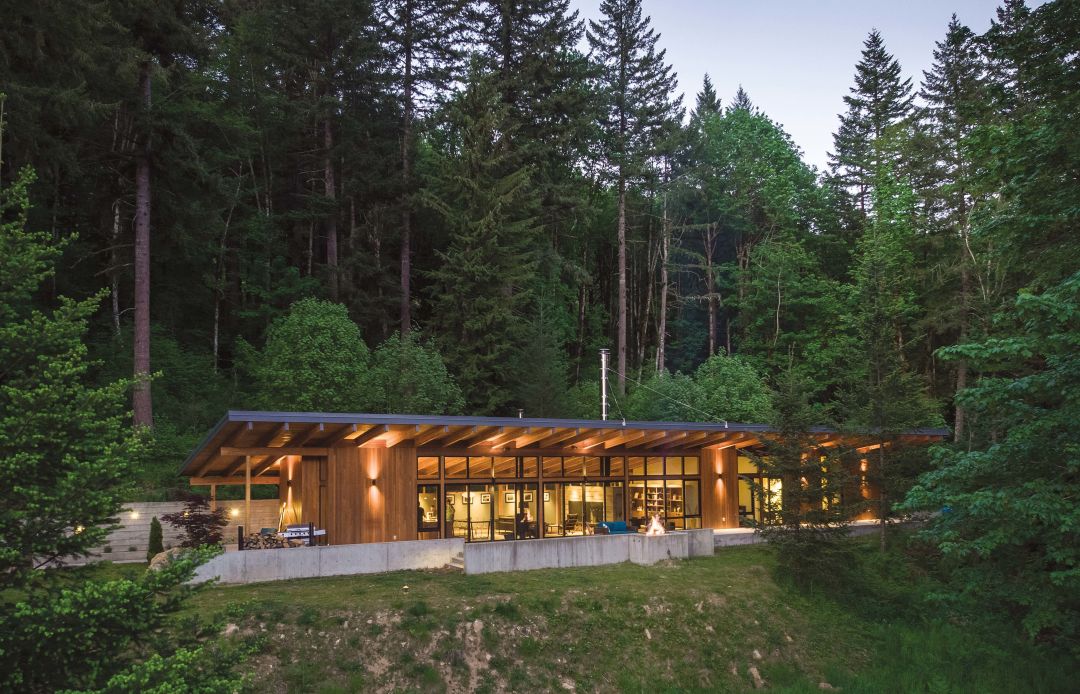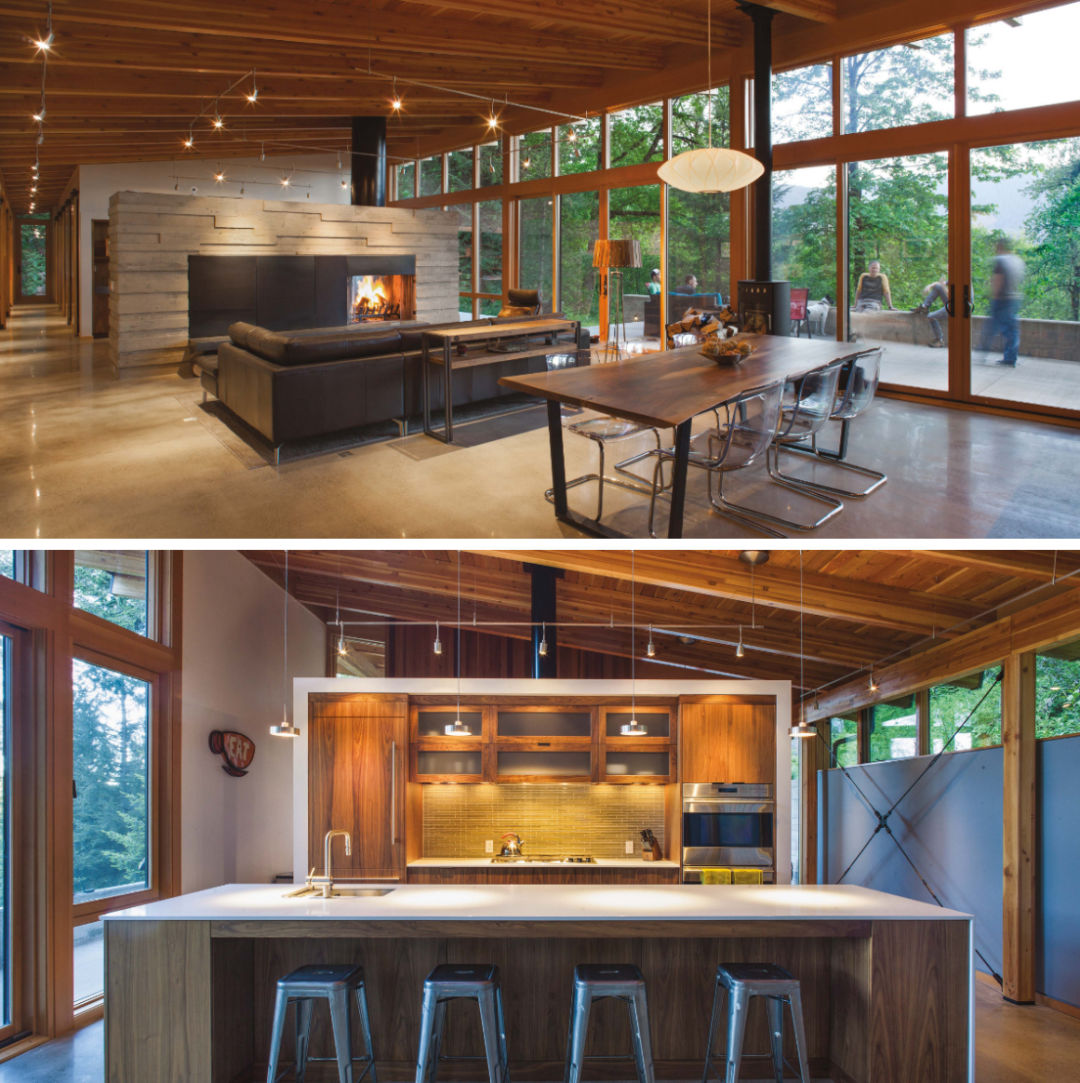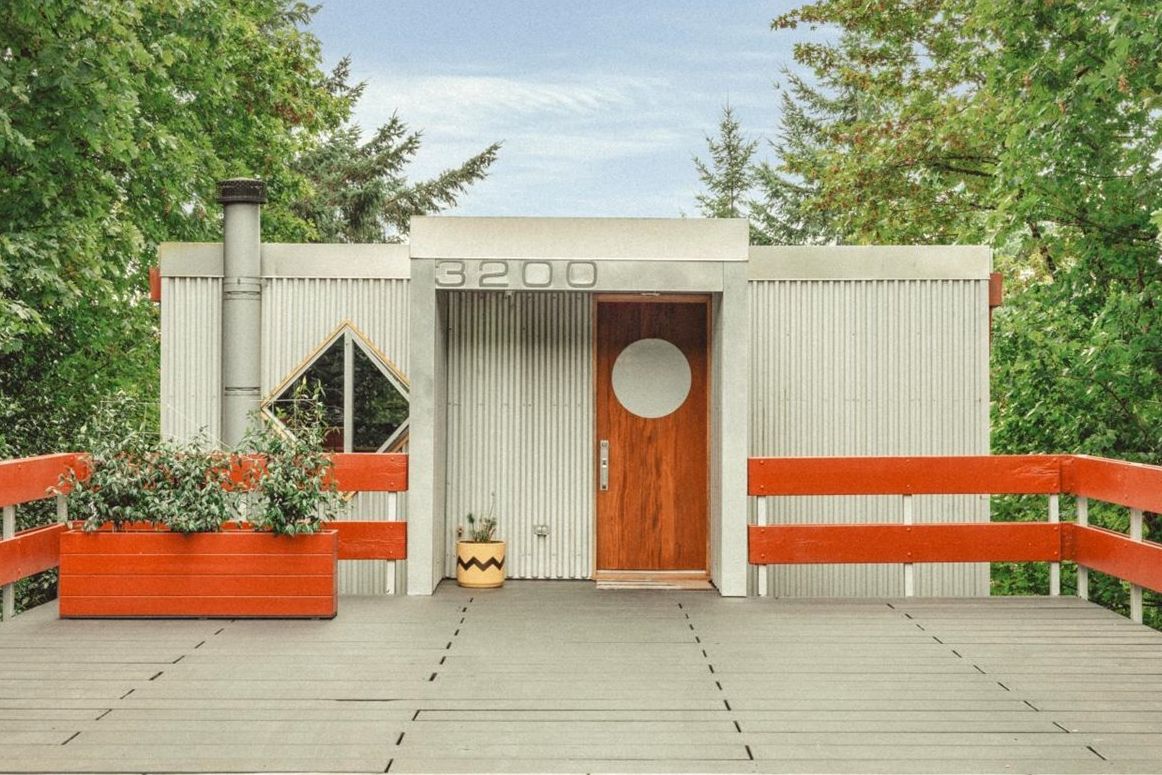It Was a Serious Journey to Build This Remote Mt Hood Cabin

Image: Courtesy Pete Eckert
Rick Berry, a principal designer at Scott Edwards Architecture, enjoys a logistical challenge. But this was something else.
A Portland couple had purchased a 20-acre plot to build their dream vacation hideaway in Brightwood, between Sandy and Government Camp. The land was so steep the architecture firm needed four-wheel drive to climb the abandoned logging road cut into the hillside. (Later, the construction crew would regrade the road with extra gravel so cement trucks could make it to the site.) Standing at the dead end, Berry realized only the road itself was flat enough to build on. That meant the future retreat could be only 25 feet wide.
The home could, however, stretch as long as the clients wanted.

These narrow constraints directed much of the design for the 2,322-square-foot Brightwood Cabin, completed last year. Berry’s design blends rustic mid-20th-century Pacific Northwest regionalism with contemporary minimalist styles, using local materials—cedar, fir, concrete, steel, and glass—to blur the division between home and wilderness.
Curved concrete steps lead to the front door. A 150-foot board-formed concrete wall retains the earth, anchors the home to the hillside, and runs the entire length of the exposed-cedar post-and-beam construction. Branching from the home’s spine, rooms progress from public to private, starting with the mudroom and opening into the kitchen, dining room, and living space. A double-sided concrete wood-burning fireplace (plus a hidden TV) divides these areas from the library and three bedrooms. Through 14-foot-high glass walls, every room offers a picturesque view of the densely forested rolling foothills to the south. (No other house is in sight—for now, at least. The Mt Hood Village area, which includes Brightwood, saw a 47 percent increase in population between 2000 and 2010.)

Image: Courtesy Pete Eckert
The cabin is stylish, but practical for the area’s tougher weather. The large rectangular metal shed-style roof, with a 3-in-12 pitch (or about a 14-degree slope), is made to withstand several feet of snow. The roof’s nine-foot overhang allows plenty of sunlight in winter, deflects summer’s harshest rays, and covers the concrete patio and exterior fire pit during the rainy and snowy months. Rigid foam insulation in the roof and cedar walls, plus a polished radiant-heat concrete floor, will keep the cabin cozy. In case of a storm-induced power outage, a small woodstove can warm the entire cabin. Best of all: Berry says the wood will gray handsomely thanks to the cedar’s natural resins; no need for stain or siding upkeep.
“The beauty of it,” says Berry, “is that it’s a really simple plan. And timeless.”




